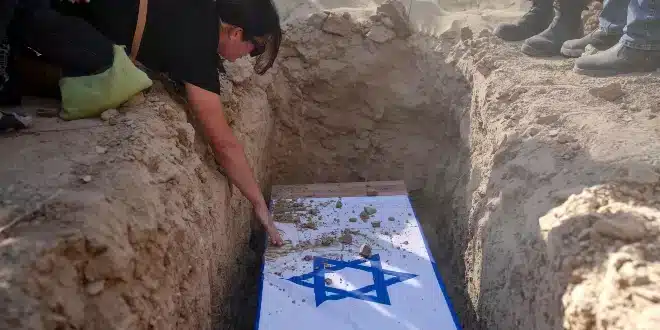Egypt has expressed doubt over the proposed plan intended to close the gaps in cease-fire negotiations between Israel and Hamas, as new details emerged just before the talks were set to resume in Cairo. This skepticism has cast a shadow over the optimism that U.S. Secretary of State Antony Blinken brought into his recent visit to the Middle East.
The renewed diplomatic efforts have intensified amid growing concerns of a broader regional conflict, following recent targeted assassinations of leaders from Hamas and Hezbollah, both attributed to Israel, and subsequent threats of retaliation.
President Joe Biden spoke with Israeli Prime Minister Benjamin Netanyahu on Wednesday, emphasizing the urgency of reaching an agreement on a cease-fire and the release of hostages, according to a statement from the White House.
Egypt, which plays a unique role as both a mediator and a country directly affected due to its border with Gaza, conveyed to the Associated Press that Hamas is reluctant to accept the bridging proposal for several reasons. These concerns go beyond their long-standing apprehensions about whether such a deal would actually lead to an Israeli military withdrawal from Gaza and an end to the conflict.
An Egyptian official involved in the negotiations explained that the proposal requires the implementation of the first phase, where Hamas would release the most vulnerable civilian hostages taken during its October 7 attack on Israel, which sparked the current war. However, the subsequent phases would be negotiated without any “guarantees” from Israel or the mediators, which has not been well received by Hamas.
“The Americans are offering promises, not guarantees,” the official noted. “Hamas is unlikely to accept this because it effectively means releasing civilian hostages in exchange for a six-week pause in fighting, with no assurance of a permanent cease-fire.”
The proposal also fails to explicitly state that Israeli forces will withdraw from two key corridors in Gaza—the Philadelphi corridor along the border with Egypt and the Netzarim east-west corridor. Instead, Israel has suggested reducing its forces in the Philadelphi corridor, with “promises” to eventually withdraw, which has not been deemed acceptable by either Egypt or Hamas.
Another Egyptian official involved in the discussions said that the chances of a breakthrough are slim, as Israel remains unwilling to fully withdraw from Gaza as part of the deal’s second phase. Israel insists on maintaining control of the Philadelphi corridor and the Netzarim corridor, a stance that Egypt has said it cannot support.
Furthermore, Egypt has informed the United States and Israel that it will not reopen the Rafah crossing into Gaza—a critical point for humanitarian aid—until Israeli forces completely withdraw from the Palestinian side of the border and the Philadelphi corridor. This area is of particular concern for Israel, which aims to prevent Hamas from restocking its arsenal through smuggling tunnels, over 150 of which Israel claims to have destroyed.
These Egyptian officials, who spoke on the condition of anonymity due to the sensitive nature of the talks, also revealed that mediators are set to meet in Cairo on Thursday and Friday to continue discussing the proposal before formally presenting it to Hamas.
On Tuesday, Hamas political official Bassem Naim stated that the bridging proposal has incorporated several new demands from Netanyahu, such as keeping Israeli forces in Rafah, Philadelphi, and Netzarim, and conducting searches of displaced Palestinians returning to northern Gaza—a measure Israel argues is necessary to root out militants.
Naim also mentioned that the proposal includes unspecified changes to the exchange of hostages held by Hamas for Palestinians imprisoned in Israel and does not guarantee that a cease-fire will be maintained during the transition between the first and second phases of the deal.
In earlier versions of the cease-fire plan, the second phase was expected to involve a permanent cease-fire, full withdrawal of Israeli forces from Gaza, and the release of the remaining male hostages, both civilian and military.
Following his visits to Egypt and fellow mediator Qatar, Blinken said that the bridging proposal is “very clear on the schedule and locations of [Israeli military] withdrawals from Gaza,” though specific details have yet to be disclosed.
Blinken emphasized that with Israel’s acceptance of the proposal, the focus should now be on securing Hamas’s agreement. According to Egypt’s state-run Al-Ahram daily, Blinken received a “clear Egyptian demand” for the U.S. to work toward a well-defined deal with explicit deadlines and objectives to encourage Hamas to sign on.
However, skepticism remains high, especially within Israel, where there are doubts about Netanyahu’s dedication to securing an agreement. “As long as the professional negotiators believe Netanyahu is sabotaging a deal, confidence will remain low,” wrote commentator Nadav Eyal in the daily newspaper Yedioth Ahronoth.
The ongoing conflict in Gaza, now in its 10th month, has led to widespread destruction and displaced the vast majority of Gaza’s 2.3 million residents. Aid organizations are increasingly concerned about the outbreak of diseases such as polio.
The war began on October 7 when Hamas and other militants launched an attack that killed approximately 1,200 people in Israel, mostly civilians. Over 100 hostages were released during a cease-fire last year, and Hamas is believed to still be holding around 110 hostages, with Israeli authorities estimating that about a third have already died. Six bodies of hostages were recovered in Gaza this week.
At a funeral for one of the hostages, 35-year-old Yagev Buchshtab, his mother Esther expressed the deep anguish felt by many families: “In what world do families have to beg and cry for the return of their family members alive and murdered?”
Israel’s retaliatory actions have resulted in the deaths of over 40,000 Palestinians, according to Gaza’s Health Ministry, which does not differentiate between civilians and combatants in its count. On Wednesday, Israeli tank and drone strikes in Khan Younis and Deir al-Balah killed at least 17 people, as reported by hospital staff and Associated Press journalists who counted the bodies.
Also on Wednesday, Netanyahu made his first visit to northern Israel since Israel’s killing of a top Hezbollah commander last month in Beirut, as attention shifts to the escalating tensions along Israel’s border with Lebanon.
“We are prepared for any scenario, both defensive and offensive,” Netanyahu stated while meeting with troops.


